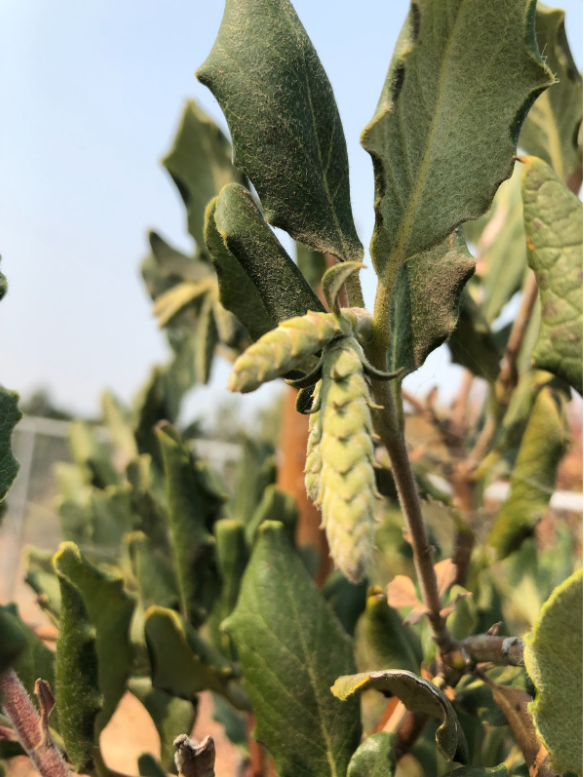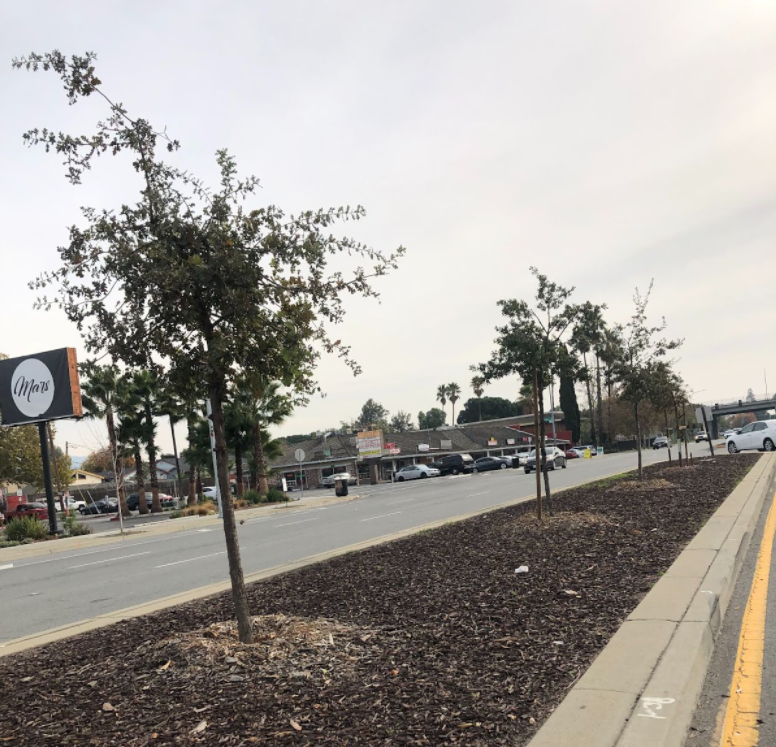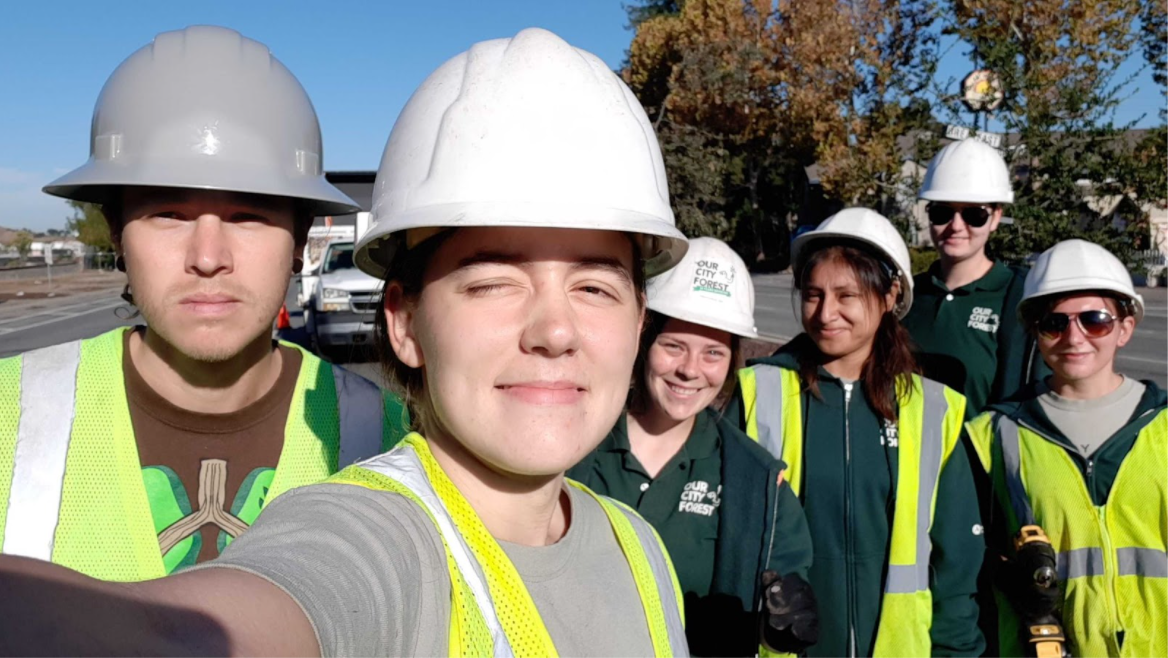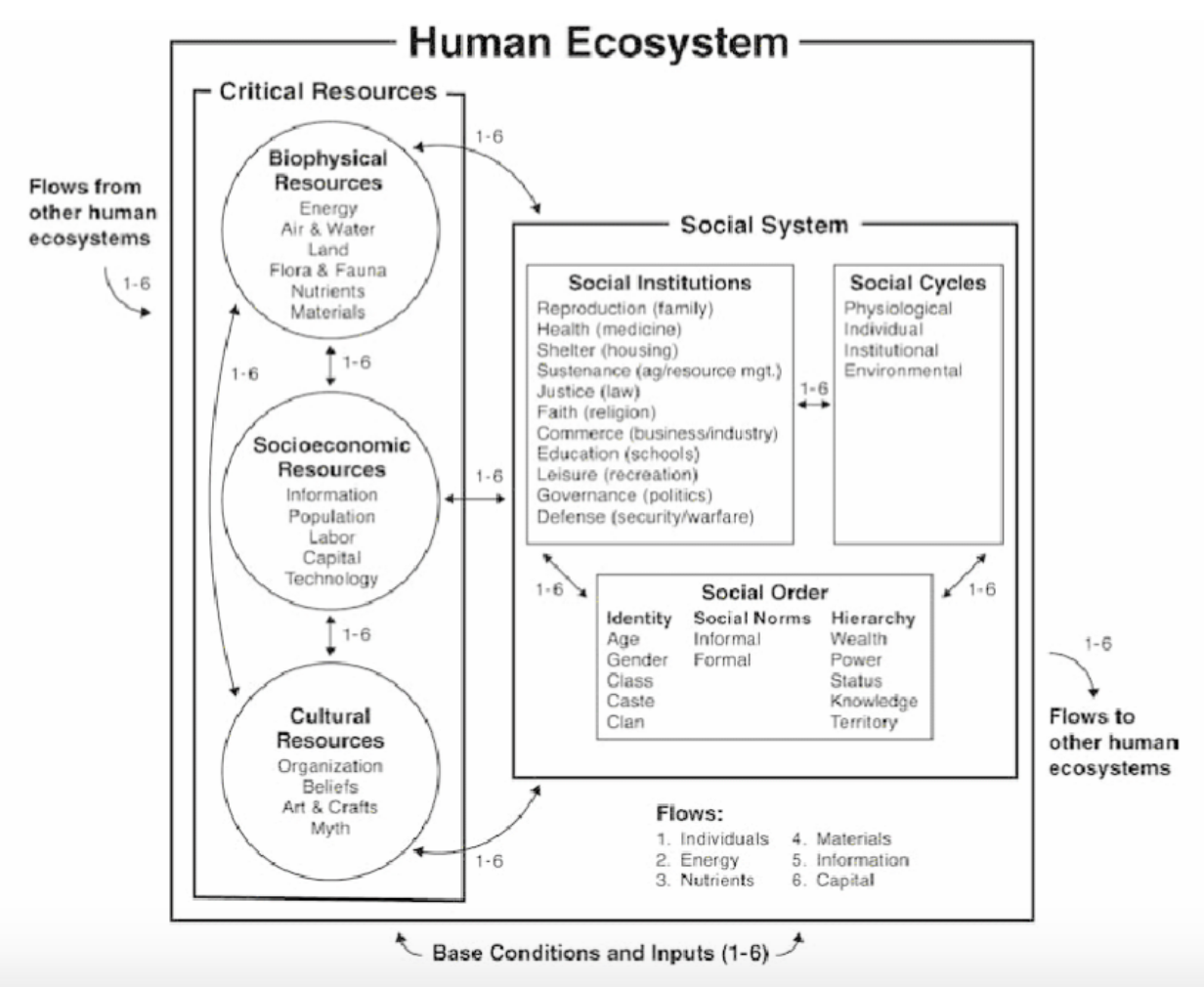Nuestra organización Our City Forest junto a California Department of Forestry & Fire
Protection, Ciudad de San José, y el condado de Santa Clara colaboran para patrocinar árboles
a comunidades con escasez de árboles. Árboles urbanos ayudan a combatir el cambio
climático, mejoran la calidad de vida y ayudan a conservar los ecosistemas ahí presentes.
Los beneficios son bastantes, un árbol maduro absorbe una gran cantidad de contaminantes
como polvo o humo por año y mejora la calidad del aire. También ayudan a prevenir
inundaciones al regular el flujo de agua. Aumentan y/o conservan la biodiversidad entre plantas
y animales. Otros beneficios de los árboles es que reducen el consumo de electricidad. Por
ejemplo, los árboles que están cerca de edificios reducen el uso del aire acondicionado y
también reducen la calefacción en invierno. Estudios demuestran que áreas verdes y árboles
reducen los niveles de estrés y mejora la salud física y mental. Por último también ayudan a
aumentar el valor de una propiedad y atraen turismo.
Our City Forest works with the San Jose Department of Transportation (DOT) to plant and care for trees along many roads and highways in San Jose. The organization is assisted in planting projects and tree care work with the help of volunteers in the community as well as AmeriCorps service members who dedicate several months to the stewardship of the urban forest in Santa Clara County. In 2018, Our City Forest planted over 200 trees from Alma Ave. all the way to the E. Capitol Expy overpass within the median of Monterey Road. This project included many species of oaks such as Quercus suber, Quercus engelmanii, Quercus virginiana, as well as the native Quercus lobata and Quercus agrifolia. Young trees need quite a lot of care and checking-up to ensure they establish properly. The California climate is stressful, and newly planted trees require supplemental water for the first 3 years after planting to grow a robust root system. From 2018 to 2021, these trees received watering services from Our City Forest to keep them alive and help them establish in the harsh, urban environment. These trees were watered over 75 times using recycled water throughout the 3-year establishment period. 118 of these trees were pruned by Our City Forest AmeriCorps members in the Spring of 2021 for clearance and structure. In the Fall of 2021, these trees were handed over to the San Jose DOT City Arborists to continue stewardship and maintenance for the many years to come.
Trees Our City Forest planted along Monterey Road.
Monterey Road is a historic gateway to San Jose. It can seem a bit industrial these days. The addition of these trees to the median has brightened up the area and will make all the difference in a couple of decades once the canopy has developed. Trees near roads help sequester carbon emissions from these industries and cars as well as help reduce particulate matter near the road. They provide shade that will help reduce the stress of the Urban Heat Island Effect as well. The aesthetic contribution of trees in this area helps support businesses and recreation down the corridor.
Trees Our City Forest planted along Monterey Road.
Not each tree survives to maturity. Some require stakes for longer periods of time, some encounter poor or compacted soils that inhibit root growth. The trees planted along Monterey Road have a high survivability rate (90%) considering the difficult conditions of the urban environment. These trees will contribute ecosystem services for many decades to come. Our City Forest appreciates our productive partnership with the San Jose Department of Transportation. We will continue to plant trees and provide 3-year establishment services to green our roadways and help fight climate change in our communities.
Our City Forest AmeriCorps member performing tree care.
Some of the Our City Forest team out at a tree care route.
When I first heard the term urban ecology, it conjured images of the trees, plants, and wildlife that we see in an urban environment. While that certainly is one definition, I am more excited about another meaning of urban ecology: “the study of cities as urban ecological systems” (ix, Grove et al, 2015). To me, this field of study reminds me that we are inherently connected to our natural environment and that our built environment (i.e. our cities, roads, buildings, etc.) is driven in part by the same rules and processes that govern our natural environment.
Image displaying a city blended with a leaf. Hofstra University
The implications of this in city planning are immense. As the Baltimore School of Ecology discusses, “scientific curiosity, social- ecological system complexity, and the multifaceted nature of sustainability and resilience— require new approaches for studying the city: its regions, global connections, and internal changes” (Grove, 2015, pg. xii)
Diagram visualizing the human ecosystem. (Grove et al, 2015, pg. 8)
While cities have historically been seen as counter to the goals of environmentalism, current scholarship and work within urban ecology studies highlight how cities and sustainability goals are intertwined. For example, cities offer, “efficiencies of scale, savings in energy and materials, and benefits of innovation and interaction that accrue to urban systems” (Grove, 2015, pg. xiv).
Urban ecology is an interdisciplinary field that can inform decision-making and city planning needed for healthy, sustainable, and equitable cities. I would like to explore some examples of urban ecology as it relates to our cities today.
Legacy
The choices that we make today will impact our communities far into the future. Understanding the present impacts of past decisions will help us make more equitable decisions moving forward. As the Baltimore School of Urban Ecology describes, “the historical distribution of physical environmental conditions, soils, and biota can influence contemporary and future ecological and social conditions. The built environment is itself a legacy in many urban systems” (Grove, 2015, pg. 6).
Diagram showing the multidisciplinary nature of Urban Ecology: complexity, urban planning, governance, urban design, ecology in cities, social sciences, stewardship, systems thinking (McPhearson et al, 2016, Figure 4)
This includes physical legacies, such as road systems and names, parks, and neighborhood demarcation. This also includes social legacies, such as the redlining and rezoning that segregated neighborhoods across the country (Rothstein, 2017). Decisions that were made many years ago have real consequences in the present. We need to learn to recognize these legacies and work towards sustainable, resilient, and equitable solutions.
Urban Resilience
We need a shift in our cities to build urban resilience, especially in light of gentrification and displacement, impacts of a changing climate on our communities, and the ongoing impacts of COVID-19. The pandemic has highlighted many of the flaws in our current city systems. As Niemela et. al. explain in their book, Urban Ecology: Patterns, Processes, and Applications, “Just-in-time production/distribution systems, small government, and even cost-effective nonprofits are driving forces of our competitive, globalizing world. A strong argument for ‘investing’ additional resources in building resilience is that in the ‘long-term’ these costs are well justified” (Niemela et al, 2015, pg. 212).
Diagram outlining 5 elements of urban resilience: urban governance, resilient infrastructure and basic services, urban disaster risk management, urban planning and environment, urban economy and society (DiMSUR CityRAP Tool).
In other words, the study and practice of urban ecology can help us build more sustainable and resilient systems. I believe the more we understand about how our systems work, and how systems in our surrounding biological ecosystems work, the more we can come up with creative solutions that build resilience equitably.
I think if we connect more deeply to place, look to the past, and explore our current built environments with a lens of ecology, we can better understand our current solutions and work towards solutions that get at the root causes of injustice. This will take a shift in perspective for all of us. What would it look like for us to shift our perspective to our surroundings, to understand the past of our neighborhoods and cities, to broaden our understanding of our place within it, and to envision various futures for our built environment?
Sources:
Grove, J. Morgan, et al. The Baltimore School of Urban Ecology: Space, Scale, and Time for the Study of Cities, Yale University Press, 2015. ProQuest Ebook Central, http://ebookcentral.proquest.com/lib/ucb/detail.action?docID=4093126.
McPhearson, T., Pickett, S., Grimm, N., Niemelä, J., Alberti, M., Elmqvist, T., Weber, C., Haase, D., Breuste, J., & Qureshi, S. (2016). Advancing Urban Ecology toward a Science of Cities. BioScience, 66, 198-212.
Rothstein, R. The Color of Law: A forgotten history of how our government segregated America. Liveright Publishing Corporation, 2017.
Urban Ecology: Patterns, Processes, and Applications, edited by Jari Niemelä, et al., Oxford University Press, Incorporated, 2011. ProQuest Ebook Central, http://ebookcentral.proquest.com/lib/ucb/detail.action?docID=800872.













